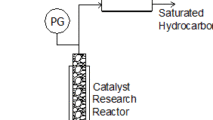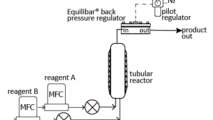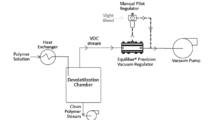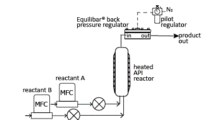Gas chromatography (GC) is a widely used analytical technique that separates gas mixtures into components for detection and measurement. This is important information in many industries to determine outcomes such as product quality or purity and process reproducibility. Analytical labs have been relying on GC for a long time and a key to the success is setting up a system with reproducible pressure or flow control through the GC.
Gas Chromatography Flow Control
Oftentimes the effluent from a flow-through chemical reactor will be sent to a GC column for analysis over a period of time. In this situation, it is important to have stable gas chromatograph flow control.
For example, in the process schematic below, reactants are delivered in a continuous flow chemistry format to a reactor where the inlet flow rate is controlled by a mass flow controller (MFC). The reactor may be a packed bed reactor, for example. At the outlet of the reactor, a back pressure regulator (BPR) is installed to maintain a steady pressure on the reactor such that the effluent flow rate is equal to the inlet flow rate as set by the MFC.
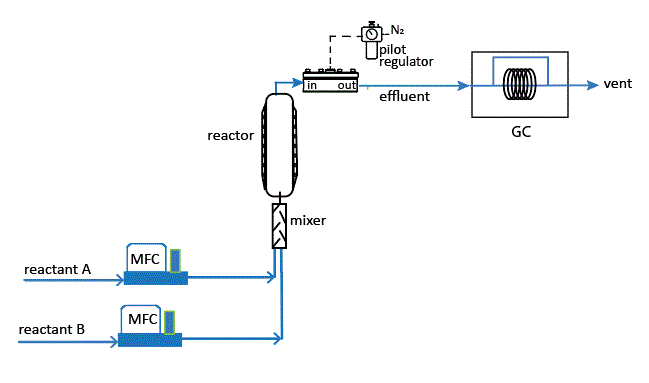
Research scientists who have previously used spring-type BPRs for this setup often find that a traditional BPR will fluctuate about its setpoint, delivering effluent flow rate that is either much higher than inlet flow rate (when pressure has built up above the setpoint) or essentially zero (as pressure is building up to the setpoint).
A downside to the traditional setup is that even when sampling the effluent at fixed intervals, the resulting gas chromatography data may not reflect a time-resolved picture of the effluent gas composition due to the high degree of fluctuation caused by the BPR.
Using an Equilibar dome-loaded multi orifice BPR in this GC flow control setup instead can be a more accurate method. The Equilibar BPR is superior at maintaining a steady pressure at the outlet of a chemical reactor, resulting in excellent flow control to the GC.
Contact an Equilibar application engineer for more information.
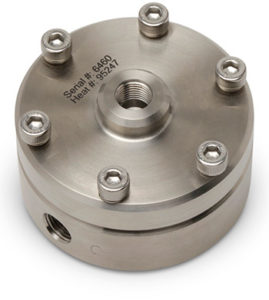
Equilibar LF2 back pressure regulator may be used for GC flow control
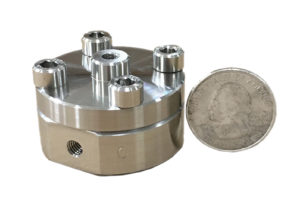
Equilibar LVF is a smaller back pressure regulator that may be used in GC analysis


